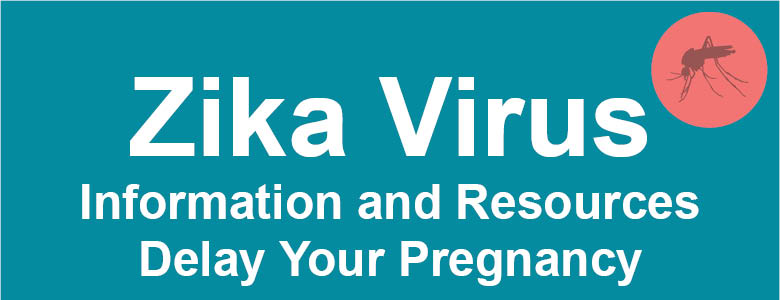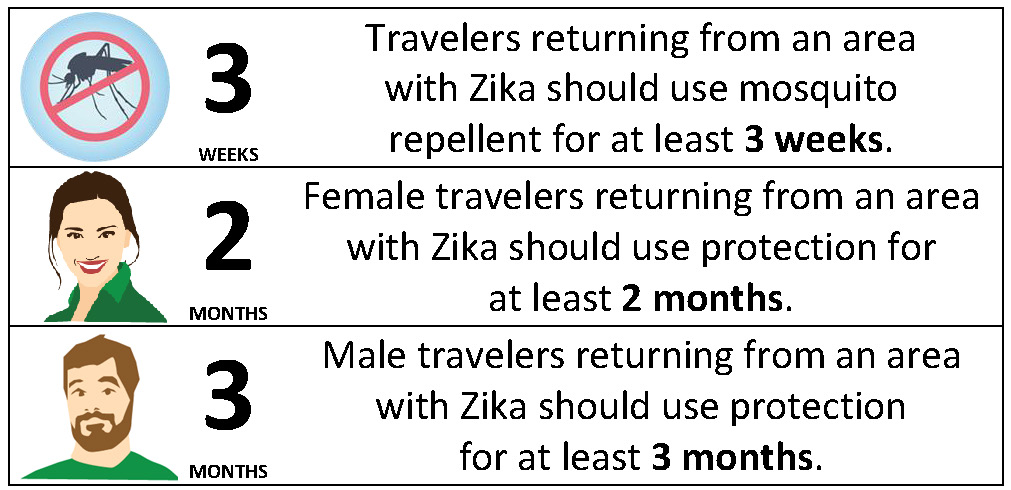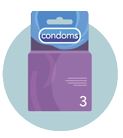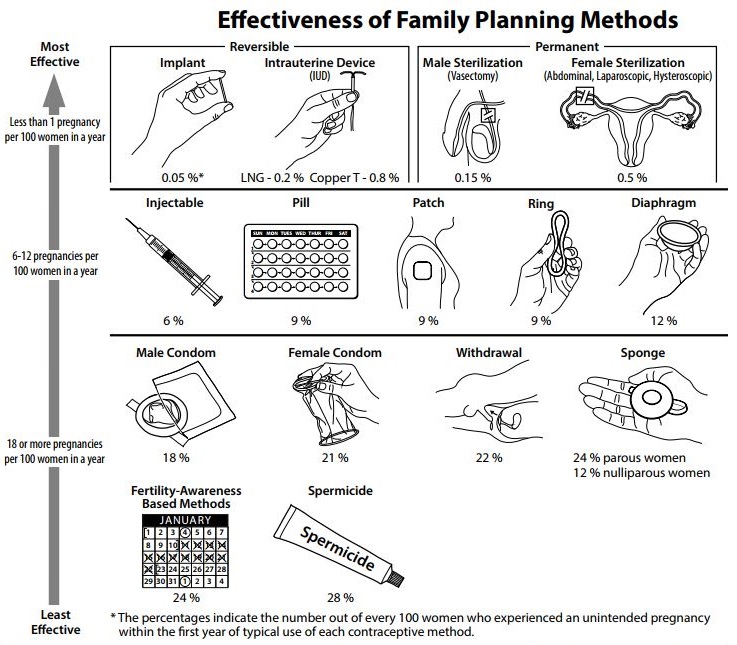
Zika virus infection during pregnancy can cause
microcephaly and other severe birth defects. Zika virus
has also been linked to a number of other poor pregnancy
outcomes. Using condoms can prevent pregnancy, Zika, and
STDs.
Delaying pregnancy if you or your partner
frequently travels to a Zika-affected country is a way to reduce the number of
pregnancies affected by Zika virus.
| If you travel,
you may consider delaying pregnancy |
| The 3-2-3 Rule |
| Methods to delay
pregnancy |
If you travel, you may
consider delaying pregnancy Some countries have mosquitoes that can transmit the
Zika virus to you. Zika virus is currently spreading in
Mexico and Central and South America. Before you travel, check the
CDC website for the latest disease updates for the
country you are visiting. Most people who have Zika do
not have symptoms. This
means you could have Zika and not know it. To be safe,
you should delay pregnancy if you or your partner has
traveled to a Zika-affected area. Follow the 3-6-8 Rule
below! The 3-2-3 Rule
The 3-2-3 Rule is a guideline to follow
after you have traveled to an area with Zika regardless
of if you have symptoms or not.



Sources:
https://www.cdc.gov/zika/prevention/prevent-mosquito-bites.html,
https://www.cdc.gov/zika/prevention/sexual-transmission-prevention.html
Methods to delay
pregnancy
If you decide that
now is not the right
time to have a baby,
talk to your healthcare
provider about
contraception, or birth
control. If you are
sexually active, the
best way to prevent
pregnancy is to use an
effective form of birth
control. There are many
different types of birth
control. The best birth
control method for men
and women is the one
you will use.
- Condoms
are the
only
birth
control
that
reduces
your
risk of
pregnancy,
Zika,
and
STDs.
- If you
want to
have
children
later in
life,
there
are
options
to
temporarily
prevent
men and
women
from
having a
baby.
Some
options
are more
effective
than
others.
- If you
do not
want to
have
children,
there
are
options
to
permanently
prevent
men and
women
from
having a
baby.
- More
information
about
birth
control
methods
can be
found
here:
 Source:
https://www.cdc.gov/reproductivehealth/unintendedpregnancy/pdf/
Source:
https://www.cdc.gov/reproductivehealth/unintendedpregnancy/pdf/
contraceptive_methods_508.pdf
If
you are pregnant, find
out more about how to
protect your pregnancy.
| More Information: |
|
|
|
|
|
|
|
|
|
|
|
|
|
|
|
|
|
|
| |
| Apps: |
|
|
|
|
|
|
| |
| Blogs: |
|
|
|
|
|
|
|
|
| |
References It's Your Future.
You Can Protect It. (March 2016).
Center for Disease Control and
Prevention
https://www.cdc.gov/teenpregnancy/pdf/Teen-Condom-Fact_Sheet-English-March-2016.pdf
Microcephaly &
other birth defects. (2017, April
26). Center for Disease Control and
Prevention. Retrieved from
https://www.cdc.gov/zika/healtheffects/birth_defects.html
Jamieson, D. J.,
Costello, C., Trussell, J., Hillis,
S., Marchbanks, P. A., & Peterson,
H. B. (May 2004). The Risk of
Pregnancy After Vasectomy. The
American College of Obstetricians
and Gynecologists, 103(5), 848-850.
doi:10.1097/01.AOG.0000123246.11511.e4
Reproductive Health. (2017, February
09). Center for Disease Control and
Prevention. Retrieved from
https://www.cdc.gov/reproductivehealth/contraception/index.htm
Tulandi, T.
(March 1997). Tubal sterilization.
New England Journal of Medicine,
336(11), 796-797.
doi:10.1056/NEJM199703133361110
Revised:
02/27/2024
|